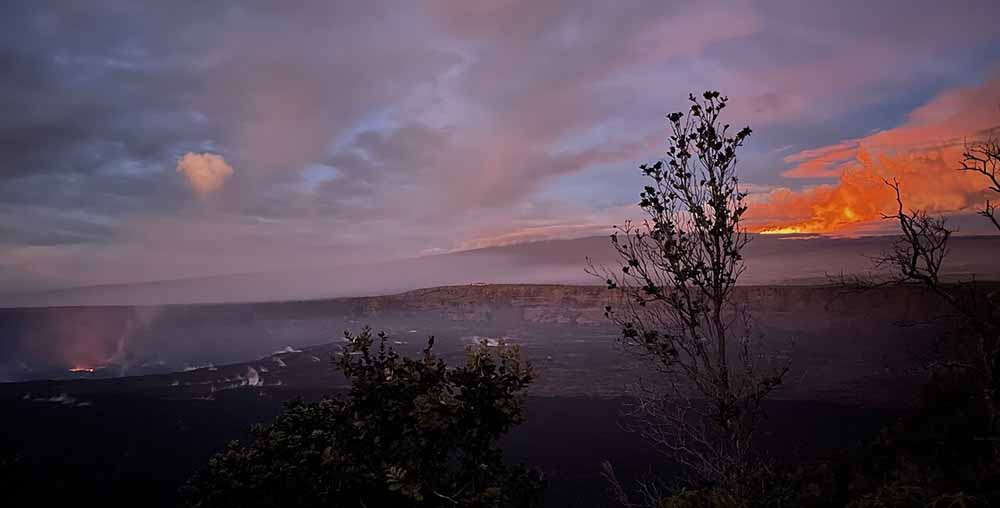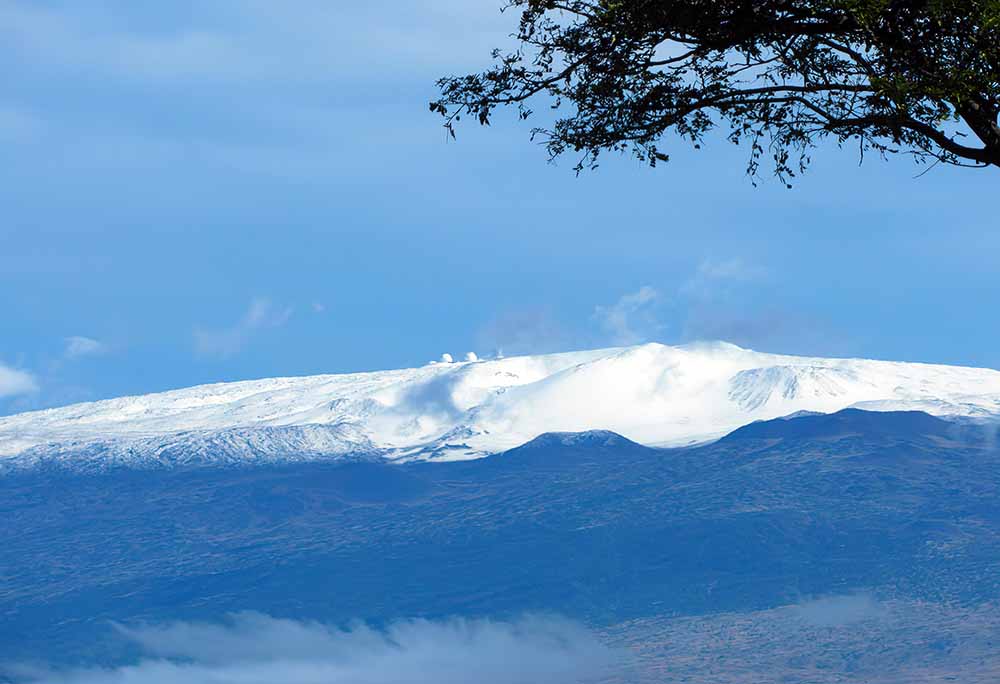Dec 20, 2022
The Elements of Surprise on Hawaiʻi Island

It won’t be hard to remember the month of December here on Hawai‘i Island. Like the old James Taylor song, we’ve seen fire and we’ve seen rain this month.
First Mauna Loa erupted for the first time in 40 years. Then, an epic tropical storm pummeled the island. Streets and streams flooded, roads closed from felled trees and power lines, and on Mauna Kea, snow covered the summit and gale force winds howled up to 160 mph. Earth, air, fire and water, all performing dramatically and competing for our attention.
First the fire.
On Sunday, November 27 at 11:30 p.m. Hawai‘i Time, the world’s most massive mountain erupted for the first time since 1984. It’s also the first time in many years that two volcanoes—Mauna Loa and Kīlauea—erupted at the same time. Like everyone else near the internet or a TV screen, most of us were mesmerized by fiercely beautiful images and videos of fiery red skies and streams of glowing gold. Some made the drive up Daniel K. Inouye Highway (DKI) for a closer look, along with thousands of others, drawn to the volcano like moths to light.
The lava flow was very near the center of the island, about 26 miles away from the Kona-Kohala coast. Red lava could be seen glowing, flowing and sometimes fountaining on the northeast slope of Mauna Loa, sometimes moving rapidly, sometimes slowly crawling. On December 15, lava drained out of the channels below the main fissure, and the flow stopped moving forward, about 2.8 miles from DKI. Fortunately, no communities were threatened during the eruption.

Numerous County, State and federal agencies, including the Hawai‘i National Guard and the military base, Pohakuloa Training Area, coordinated efforts to share accurate information, organize traffic in the viewing area, and be prepared to assist should any threat occur. Vulcanologists, many of whom wait years for an active eruption, gathered tons of data as they followed the flow moment by moment.
It’s not impossible that lava could flow into populated areas. A look at the history map tells the story, looking back as far as 1843. In those 179 years, Mauna Loa has sent lava in repeating patterns to the northeast and southwest; the exception being the Kaniku flow of 1801 and 1859, where the Mauna Lani Resort is located.
One reassuring thing to know: Mauna Loa is a shield volcano. Unlike Mt. St. Helens and other stratovolcanoes, it does not build pressure and suddenly explode with devastating force. Mauna Loa’s eruptions happen more slowly, releasing pressure over time, generally through cracks or fissures, or subterranean lava tube caves. Kīlauea, has been erupting almost constantly and predictably since 1983, captivating visitors with astounding beauty. On the dark side, it can be devastating to those living in its path, as in the 2018 eruption which destroyed some 700 homes in the Puna District.
Bottom line, there are reasons to be cautious, and to be prepared. But for most of us, most of the time, there are many more reasons to be fascinated and awestruck.
Then the rain
On December 19, a “Kona low” storm rolled across the islands, with thunder and lightning, hail in some places, high surf and high winds. Flash floods in places like Kawaihae and Waikoloa, normally desert-dry, closed main roads as intersections filled with brown, muddy water. At the Westin Hapuna Beach Resort, a river of runoff poured down the hill beside Meridia Restaurant as muddy waves surf pounded the beach.
Island-wide at least six roads were closed by flooding, downed trees or power lines, including Ali‘i Drive in Kona, Waipi‘o Valley Road, Old Mamalahoa Highway, Highway 19 near Pa‘auilo, and Akoni Pule Highway in North Kohala. The summits of both mountains had blizzard conditions and severe winds up to 160 mph.

Today (December 20), the skies are blue and the winds are balmy. The mountains are veiled in snow. It doesn’t take much imagination to envision Poliʻahu, goddess of snow, competing with her sister Pele, goddess of the volcano. This time, ice may have won over fire. Next time remains to be seen.
It can be frightening and exhilarating to witness such incredible power, to realize that nature is in charge and we most definitely are not. More than fearsome though, are the awe-inspiring, a once-in-a-lifetime event you will never forget.




